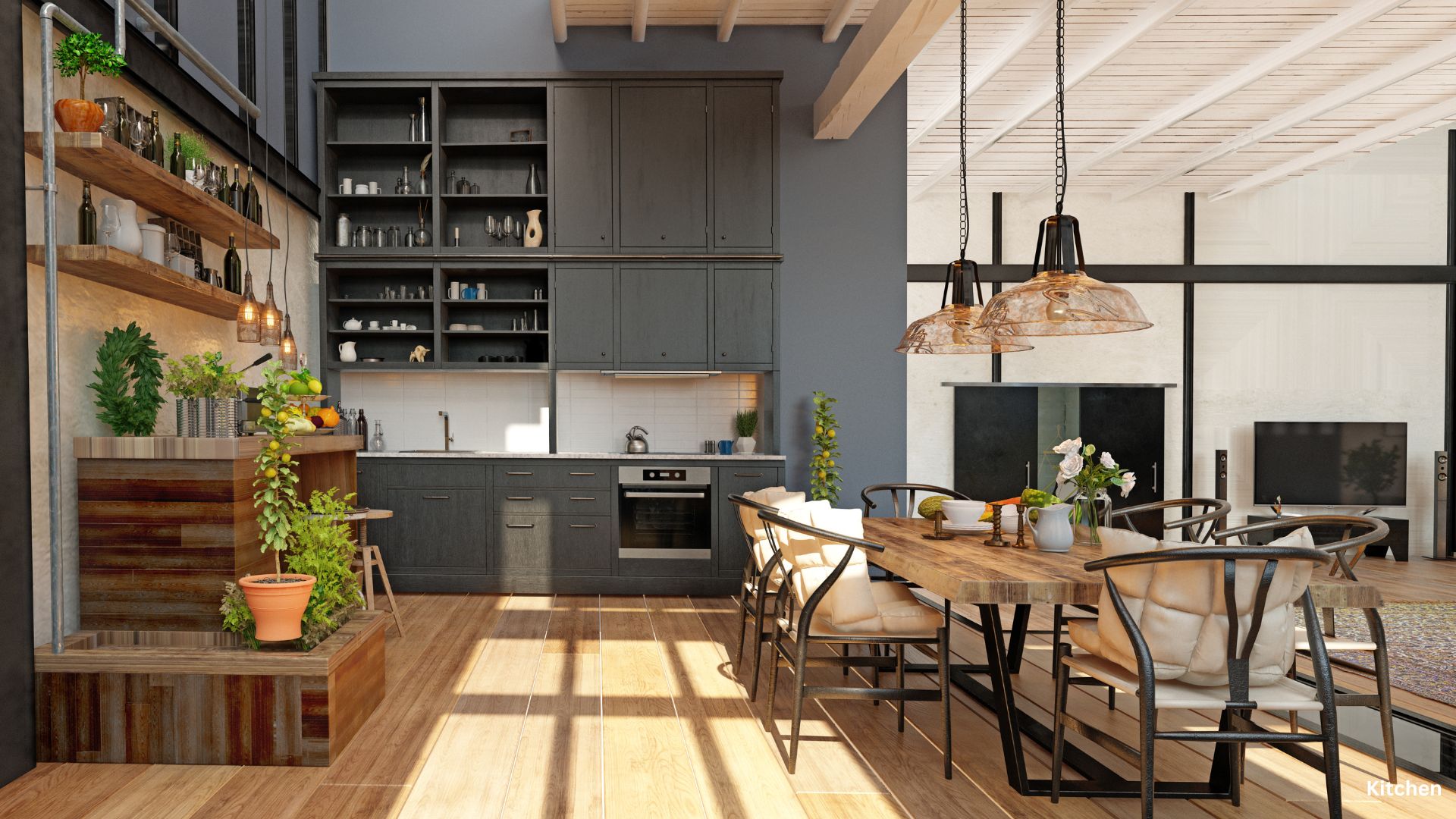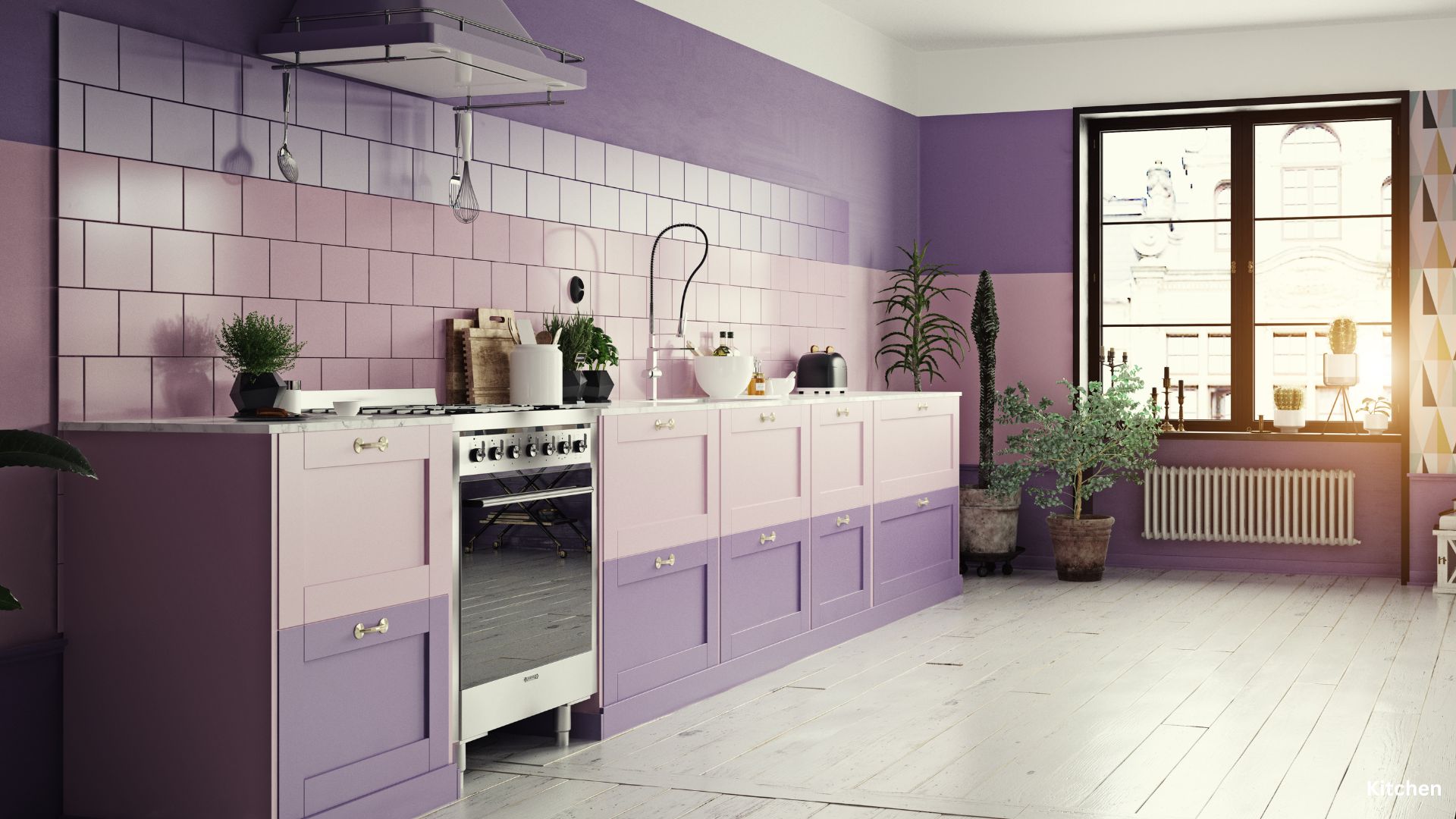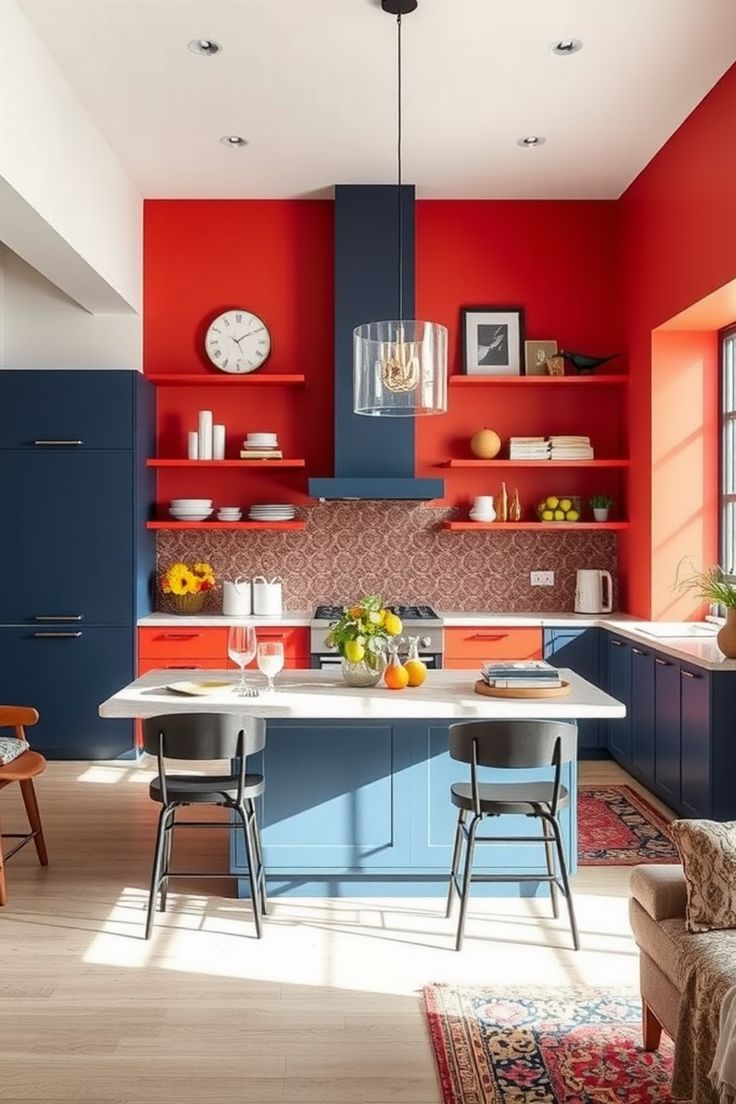Choosing the right kitchen paint color can transform your space, making it more inviting, stylish, and reflective of your personality. Whether you prefer bold hues, pastels, moody tones, or light shades, the right paint can make all the difference.
Kitchen Paint Color Options
Bold Colors
Bold kitchen colors like deep red, navy blue, and vibrant yellow can create a dramatic and lively atmosphere. These colors work well with modern and eclectic kitchen designs, providing a striking backdrop for your cooking and dining area. Consider using bold colors as accent walls or on cabinetry to add a pop of excitement without overwhelming the space.
Pastel Colors
Pastel kitchen colors, such as soft pinks, mint greens, and light blues, bring a sense of calm and freshness to the kitchen. These hues are perfect for creating a serene and inviting environment. Pastels work beautifully in country-style or shabby-chic kitchens, offering a subtle charm and a bright, airy feel.
Moody Colors
Moody kitchen colors, including charcoal gray, forest green, and inky black, add sophistication and depth to your kitchen. These shades are ideal for creating a cozy, intimate atmosphere. Pair moody colors with metallic accents and warm wood tones to balance the darkness and add warmth to the space.
Light Colors
Light kitchen colors, such as white, beige, and soft gray, are timeless and versatile. They can make your kitchen feel more spacious and bright. Light colors are perfect for minimalist and contemporary kitchen designs, providing a clean and crisp backdrop that highlights other design elements.
Tips for Choosing Kitchen Paint Colors
- Consider Your Kitchen’s Size: Light colors make small kitchens feel larger, while dark colors add coziness to larger spaces.
- Evaluate Natural Light: The amount of natural light affects how paint colors look. Test colors in different lighting conditions.
- Match Your Style: Choose colors that reflect your personal style and the overall design of your home.
- Coordinate with Cabinets and Countertops: Ensure your chosen color complements or contrasts nicely with your kitchen’s fixtures.
- Use Color Psychology: Think about the mood you want to create. For example, yellow is cheerful and energizing, while blue is calming and serene.
- Test Samples: Paint small sections of your wall or use large color swatches to see how colors look at different times of the day.
- Consider the Finish: Semi-gloss and satin finishes are ideal for kitchens due to their durability and ease of cleaning.
Common Questions About Kitchen Color
What is the best color for a small kitchen?
Light colors like white, beige, and soft pastels can make a small kitchen appear larger and more open.
How do I choose a kitchen paint color that complements my cabinets?
Consider the undertones of your cabinets and choose a paint color that either matches or contrasts nicely. For example, warm wood cabinets pair well with cool colors like blue or green.
Can I use dark colors in a small kitchen?
Yes, but it’s best to use them as accents or on one wall to avoid making the space feel cramped.
Should I use glossy or matte paint in the kitchen?
Semi-gloss or satin finishes are ideal for kitchens as they are easier to clean and more durable than matte finishes.
How can I test paint colors in my kitchen?
Paint small sections of your wall with different colors or use large color swatches to see how they look in different lighting throughout the day.

Choosing the perfect kitchen paint color involves considering your personal style, the mood you want to create, and how the color will interact with your existing kitchen elements. Whether you opt for bold, pastel, moody, or light shades, the right paint can enhance your kitchen’s overall look and feel.






